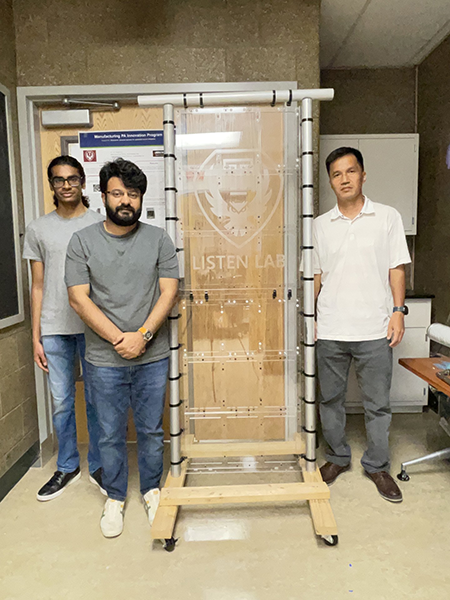Temple and Lasermation develop absorptive barriers for pickleball noise
Nathan Snizaski
Jun 8, 2025
Pickleball is the fastest-growing sport in the United States, drawing millions of new players each year. But with its rise comes an unexpected challenge: noise. The sharp, repetitive “pop” of plastic balls hitting paddles and echoing off hard court surfaces has sparked tension between players and nearby residents—especially in dense urban areas like Philadelphia.
Local governments have attempted to retrofit courts with sound-mitigating panels, but the results have been limited. To find a better solution, researchers at Temple University are collaborating with Lasermation (Philadelphia, PA) to develop a new class of absorptive acoustic barriers designed specifically for pickleball.
“The backdrop of this project is the increasing popularity of pickleball as a cross-generational sport,” says Haijun Liu, associate professor of mechanical engineering at Temple University. “During the Covid-19 pandemic, demand for courts skyrocketed, and they were in use from early morning until late at night.”
Residents took notice. “Neighbors were being disturbed day and night by the sharp, repetitive sound of play,” says Liu. The project began when a colleague of Liu, living near a local court, asked the team for advice on how to mitigate the noise of pickleball games. The research team collected live sound samples of people playing pickleball in the court to characterize the distinctive sound of the game.

Pickleball sound mitigation team (left to right): Subhrodeep Ray, Arin Bambhrolia (undergraduate student), and Haijun Liu
“Whenever the ball hits the paddle, you get a sharp tonal frequency, irrespective of the kind of paddle being used by the player,” explains Subhrodeep Ray, a Ph.D. candidate in mechanical engineering. “When we analyzed those frequencies, we found out that the sound of the ball impacting the paddle is around 1kHz.”
Sound mitigation panels on the market proved insufficient to address the sound issue. In exchange for keeping the sound of play from spreading, the sound merely bounced back inside the court, frustrating players. Other marketed solutions of opaque rubber sheets set up around the perimeter of the court block visibility to see outside the court, causing both aesthetic and safety concerns. Based on these requirements, the research team identified its problem statement: creating a product that absorbs pickleball noise at its specific frequency while staying transparent and safe.
The team’s prototype panel features a “sandwich” design, comprising a perforated outer panel, an air gap, and a solid back panel. When sound waves pass through the perforations, they lose energy in the air gap before reaching the solid back layer, resulting in absorption of the sound.
“Depending on how you arrange the perforations on the front panel, you can tune it to absorb different frequencies,” Ray explains. “We tuned ours for pickleball’s sound at around 1 kHz.”
With Lasermation’s advanced laser-cutting capabilities, the team scaled their proof-of-concept from a 4-inch square into 12-by-3-foot panels for field testing. The research team is planning to conduct a field study to measure the effectiveness of their design.
“In the lab, we all work on a lot of technology but don't often get to see it being applied in the real world,” says Ray. “This was a very quick transition in terms of an application to a growing issue around Philadelphia and communities elsewhere. If we can help solve a problem for both sides of this issue—the players and residents—then I think we will have done our job. As a scientist, you want to develop a product that satisfies the needs of the people who require it.”
We can see the impact of this research right away. This issue [of pickleball noise] has been in the news, and so we’re hoping to help our local community.
Haijun Liu, associate professor of mechanical engineering, Temple University
“This project, supported by the Manufacturing PA program, is highly translational,” says Liu. “We can see the impact of this research right away. This issue has been in the news, and so we’re hoping to help our local community in Philadelphia and beyond.”
Lasermation president Joe Molines sees wider potential. “If you can tune the panels to other disruptive sounds—like exhaust fans—there’s a tremendous opportunity. I immediately saw the brilliance of this product way beyond the obvious application. It’s so clever and unique.”
Molines also notes the collaborative nature of the project to solve a relevant community problem: “The wonderful part about getting involved with Temple on this unique invention is to find and push the boundaries of your experience. Tricky problems require unique applications, and I can see potential for this technology way beyond the brilliant idea itself.”